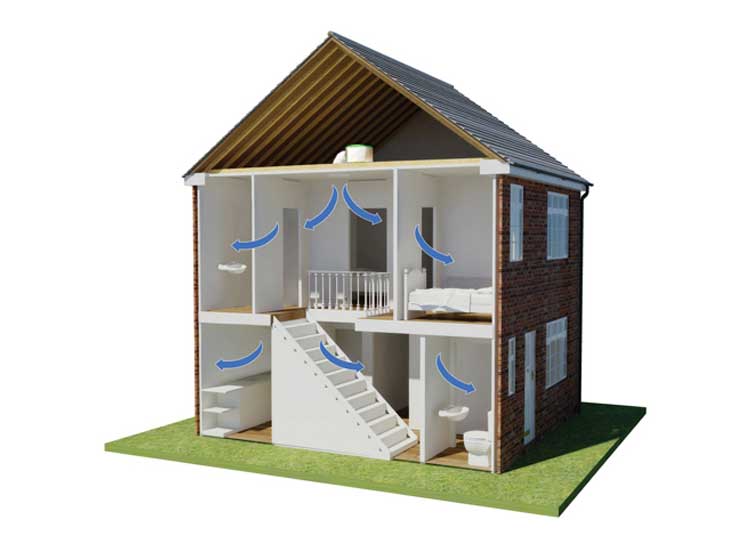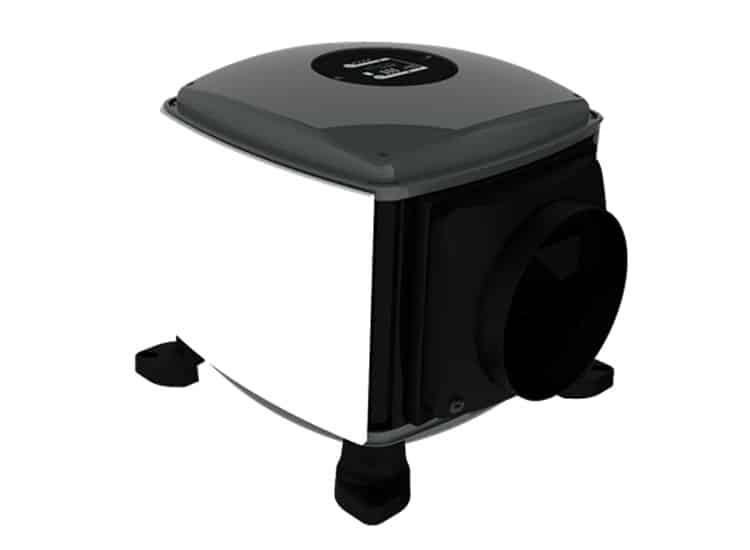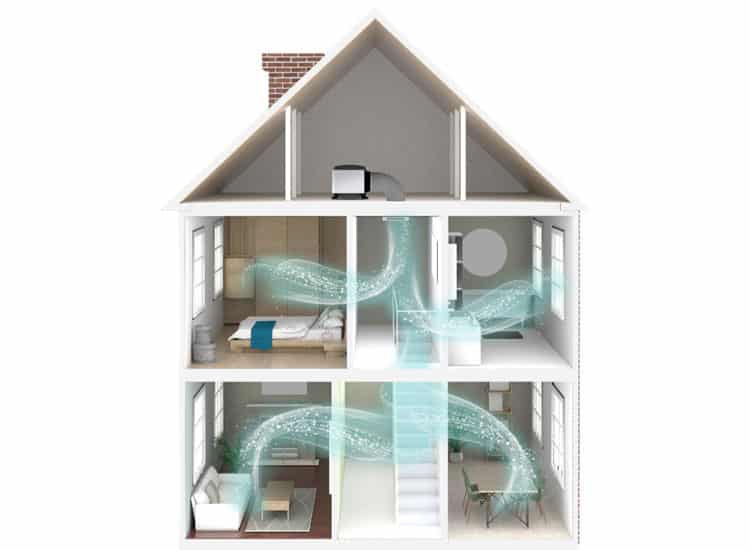Positive Input ventilation | PIV

Positive input ventilation (PIV) is an effective way to control indoor air quality. This system works by introducing a stream of fresh, filtered air into your property which then displaces stale and humid air that causes condensation and other damp related issues.
Tired of reading? Listen to this article!
These systems typically comprise a small PIV unit which is situated in your loft for houses and on the wall for flats and is ducted to the common areas such as hallways or landings. Operating at a slow speed, the system is continuously drawing preheated air into your property and replacing it completely several times within a period of 24-hours.
If you are dealing with condensation, black mould, or allergy-related respiratory issues, then this system could be just what you were looking for.
How Positive Input Ventilation Works?
Positive input ventilation systems (PIV) operate by drawing fresh air into your roof void or directly into your flat where it is then filtered by the PIV unit. The filtered air is tempered using the in-built air heater and is then introduced into the living space. This additional airflow creates a slight positive air pressure which forces stale, moisture-laden air to exit the building through available leakage points.
Areas such as bathrooms and kitchens require additional extraction fans that in conjunction with the PIV unit create a complete whole-house ventilation solution.
This system can be used in both old and new properties and can provide significant savings in heating your property as it recirculates warm air back into the living space. The system itself is also cost-effective as it operates at around a cost of 1 penny per day in energy consumption with slightly more in the colder months when the air heater is operating.

Why Should You Use Positive Input Ventilation?
Draft proofing, double glazing and insulation are all great home improvements as they increase the energy efficiency and draughtproofing of your property. Unfortunately, while solving one problem, these improvements tend to create a new issue – lack of ventilation and an increase in the moisture content of the air in your property which is called the relative humidity.
Humid air tends to create issues such as condensation, black mould, dust mites or even respiratory difficulties for individuals with asthma. PIV systems help to prevent these issues by diluting, displacing and replacing humid air in your property and provide the following benefits:

Prevents condensation and mould growth | High relative air humidity tends to condense on surfaces as the air temperature drops. Areas that are frequently affected by condensation soon start to germinate mould spores. By utilising a PIV unit, you will maintain relative air humidity at a stable level preventing both condensation and black mould issues.
Health benefits | Condensation affected rooms soon start to germinate black mould. Properties affected by mould produce an unpleasant musty smell and can also be harmful to people with respiratory illnesses such as asthma.
Decreased energy consumption | The heat produced by your radiators accumulates at the top of your property. The PIV unit will circulate this otherwise wasted heat back into your living space allowing you to potentially save on your heating bills.
Ventilating the whole property | Not like traditional extraction fans, positive input ventilation systems circulate the air across the whole property. The air will circulate even when room doors are closed as long as there is a slight gap beneath the door.
Silent operation | The unit produces a gentle flow of air that is practically inaudible when operating at a normal speed.
Can You Use Positive Input Ventilation in Any Property?
Positive input ventilation units used by Richardson & Starling can be introduced to almost any domestic setting. No matter if you live in a multi-storey property, a bungalow, detached house or a flat, our damp specialists will specify an effective system to meet your needs.
Properties with a loft will benefit from a loft unit as it draws the accumulated heat in the roof space back into the living space. The unit is hidden in the loft with only a minimal ceiling outlet being visible in a hallway or landing.
Properties without a loft can benefit from a wall-mounted unit that works using the same principle. Fresh air is drawn into your property and displaces moisture-laden air out of the property.
Both units can be used in conjunction with humidistat extraction fans to create an optimal solution for whole-house ventilation. Our PCA accredited specialists will specify the right combination for your property and make ventilation by just opening windows a thing of the past.
Frequently Asked Questions About Whole House Ventilation Systems
Do PIV units make noise?
While operating at normal speed, the unit will be practically inaudible. The noise might only slightly increase if you require to boost the setting to deal with a higher air moisture content in your property. Once the humid air is displaced and at lower levels, the unit can be reset at the normal running speed.
Will the fresh air be cold?
This is done with an electronic moisture meter which indicated the level of moisture in the thickness of the wall by drilling small holes in the wall and inserting deep probe sensors.
Infrared Cameras
Every standard PIV unit used by Richardson & Starling has an in-built heater that automatically heats the fresh filtered air up. If the air from outside or within the loft is warm enough the heater switches off and only kicks back on if the temperature drops.
Is PIV expensive?
The cost of a PIV system can vary by property and specified installation, but most of our installed systems range from £700 to around £1000. The cost of running the system is low and there are potential cost savings to be made on your heating bills.
Do I need to look after the PIV system?
Once the unit is installed by our specialists it will be completely autonomous. The system can be adjusted to boost the air flow if required to suit increased air humidity levels. The Air Filters on the PIV units require to be renewed as per the manufacturers instructions which is 5 years for a loft unit and 3 years for a wall unit.Are you looking for an effective solution to solve condensation, mould and indoor air quality issues? Contact your local Richardson & Starling branch for advice or arrange a property survey.
